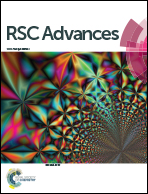A stable Ni/SBA-15 catalyst prepared by the ammonia evaporation method for dry reforming of methane
Abstract
A stable Ni/SBA-15 catalyst was prepared by an ammonia evaporation (Ni-AE) method for dry reforming of methane. The characterization results exhibited that the highly dispersed and uniformly distributed Ni nanoparticles with strong metal–support interactions can be obtained by the ammonia evaporation method. The presence of Ni phyllosilicate was crucial to obtain Ni nanoparticles with a size of 3.2–5.2 nm after reduction by H2, which were smaller and exhibited a narrower size distribution than in the sample prepared by impregnation (Ni-IM). Dry reforming of methane reactivity results showed no observed decrease of activity for Ni-AE even when reacted at 800 °C for 100 min or 700 °C for 100 h, while the Ni-IM presented an obvious decrease under the same conditions. TEM images of spent Ni-AE catalyst further confirmed that the Ni nanoparticles were highly dispersed, and the weight loss of Ni-AE (2.09%) revealed by the TG curves is much lower than that of the Ni-IM sample (24.16%). The strong metal–support interactions derived from Ni phyllosilicate were mainly responsible for resistance to coking and sintering.


 Please wait while we load your content...
Please wait while we load your content...